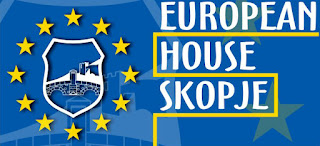
The integration of the Republic of Macedonia in the European Union represents a clear and categorically expressed strategic interest and a priority goal in the policy of the Macedonian Government. The bilateral Stabilization and Association Agreement signed in April 2001 is the last stadium before Macedonia’s admission to the family of developed European democracies. The agreement, as part of the stabilization and association process, initiated by the European Union, represents its major contribution to the Stability Pact for Southeastern Europe. By the end of 2002, the agreement was ratified by the parliaments of Germany, Denmark, Ireland, Austria, Spain, Sweden, the Netherlands and United Kingdom. In 2003, the parliaments of France, Portugal, Greece and Luxembourg also ratified the agreement.
Macedonia is the first country in Southeastern Europe that successfully brought to an end the negotiations for signing of such an agreement. Another detail of this accord is interesting, and that is the fact that the Agreement was first ratified by the European Parliament before the separate EU members states did the same. The Stabilization and Association Agreement, as a complex and legally binding political act, places the Republic of Macedonia among the potential members of the EU and makes it a factor in creating a Europe of the future, a society with the highest democratic values, security for all its citizens and social justice.
From an economic point of view, the Agreement opened the doors to one of the largest, and financially one of the most powerful market in the world. The European family is the most significant partner of the Macedonian economy and within those frames, exports to the EU account for 50.7%, as imports account for 45.2% of Macedonia’s total foreign trade. Before the Stabilization and Association Agreement was signed, in 1997, Macedonia and the EU signed an agreement for cooperation, as well as textile, wine, and transport agreements. Macedonia’s most important trade partners in Europe are Germany, Italy, and Greece, and its most important export products are ready-made clothing, hot rolled and zinc-coated plates, non-alloyed zinc, wine, ferrosilicon, flexes, footwear, and cotton yarn. The export of these goods earns Macedonia an annual profit of around $400 million.
The Stabilization and Association Agreement between the Republic of Macedonia and the EU
has an asymmetrical model that regulates their bilateral trade relations. Under the SAA, the Macedonia-made goods imported in the EU will not be subject to customs and quantity restrictions, save for fish, sea products, veal and wine. Macedonian goods will be one-sidedly entitled to customs relieves in a ten years’ period of adjustment towards a future, limitless competition. The European Union is already allowing customs-free import of almost all the Macedonian products, and with the gradual trade liberalization on the Macedonian side, a free trade zone will be introduced over the next ten years. Within the framework of the SAA, special protocols regulate trade in, what are known as, sensitive sectors, such as textiles, and production of steel and steel products.
In March 1996, the Republic of Macedonia became a full member of the PHARE program and between 1996 and 1999, 100 million euros was granted to Macedonia in support of its reforms.
In January 2002, the European Commission adopted a five-year strategy for Macedonia for which
EUR 110.5 million was approved. The EU financial aid will be implemented through the CARDS program from 2002 to 2006 and will support the plan for stabilization and association of the West Balkan countries. Priority will be given to the democratic processes, the legal, economic and social development, ecology and other key matters in the process. An accent will be put on the promotion of the civic society and the inter-ethnic dialogue, and on reconciliation and prevention of any new conflicts. The money will also be used to support the process of creating effective market economy, promote trade, decrease unemployment, improve the judiciary system, reinforce border controls, protect natural environment and prevent money laundering. For the countries in the region
included in the process of stabilization and association - Albania, Macedonia, Bosnia, Croatia, and Serbia and Montenegro - the European Commission committed a total of EUR 5.5 billion.
In the next ten years, the EU, as well as other international political and financial factors are expected to show greater interest in the political consolidation of Southeastern Europe. In this regard, Macedonia is considered one of the leaders that should use its positive influence to help the countries of the Western Balkans get out of the crisis as soon as possible.

No comments:
Post a Comment